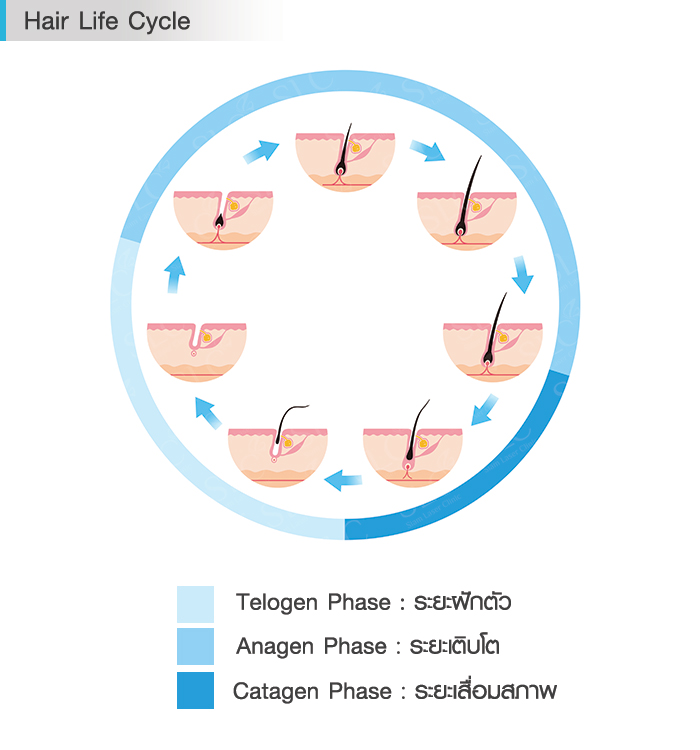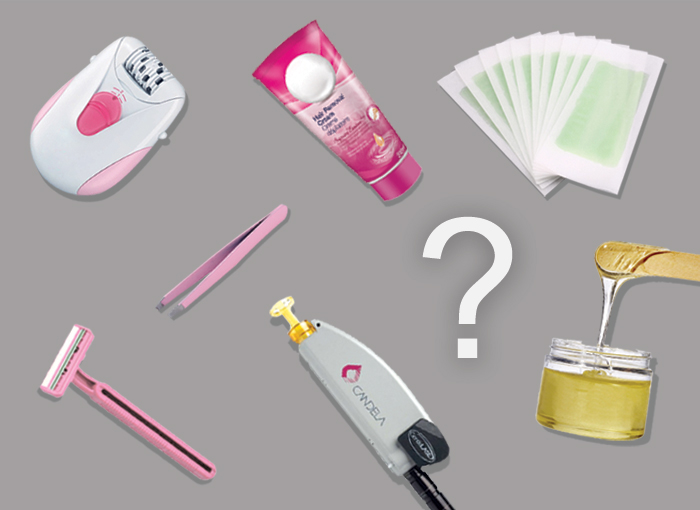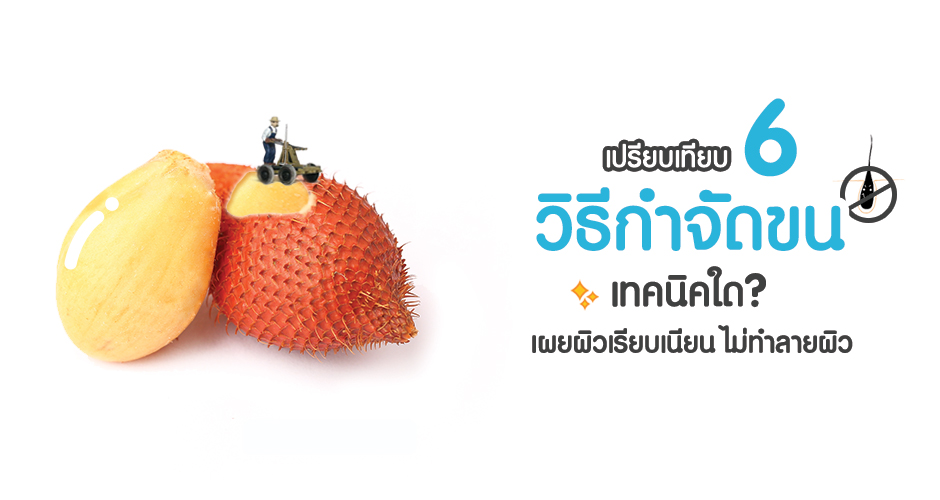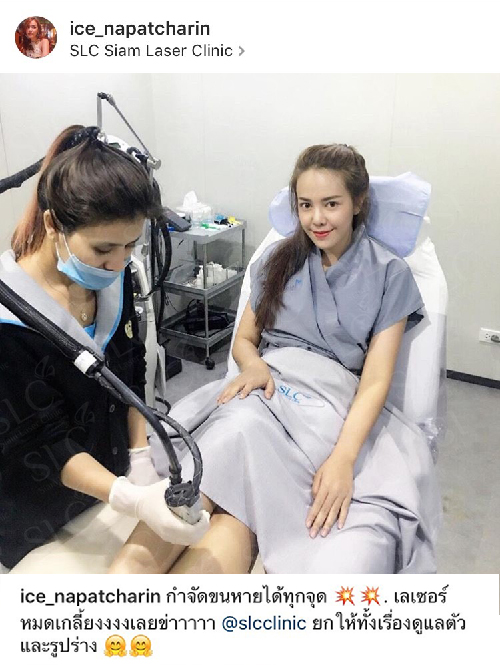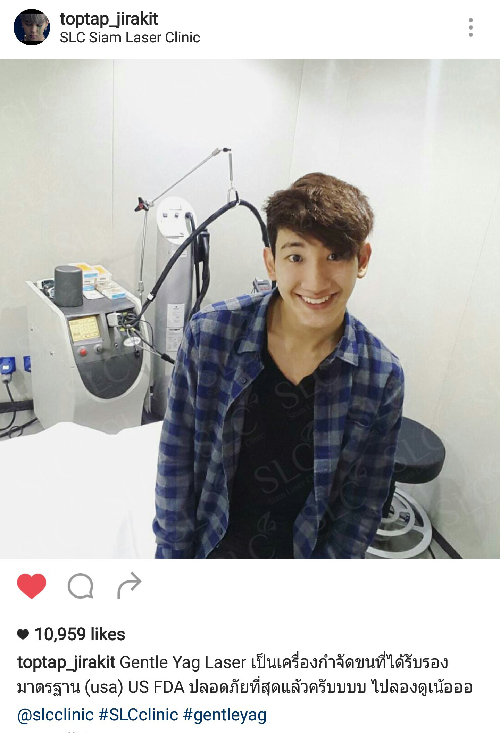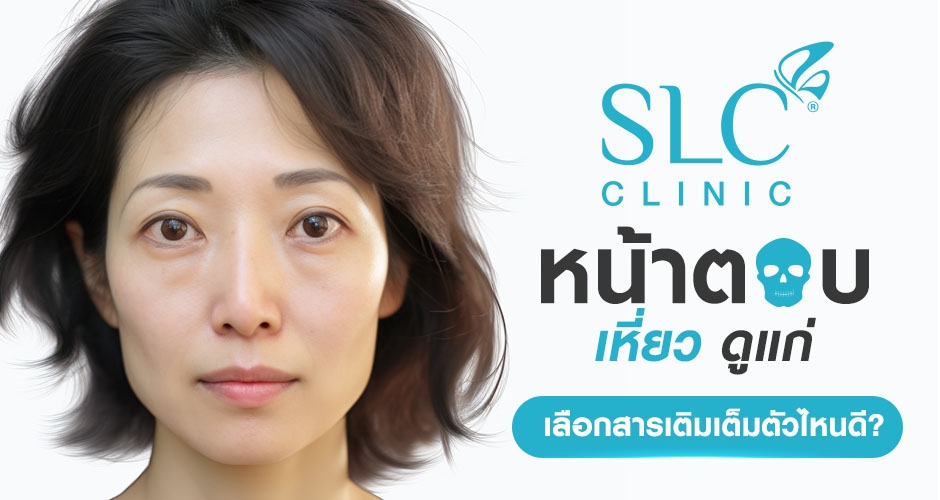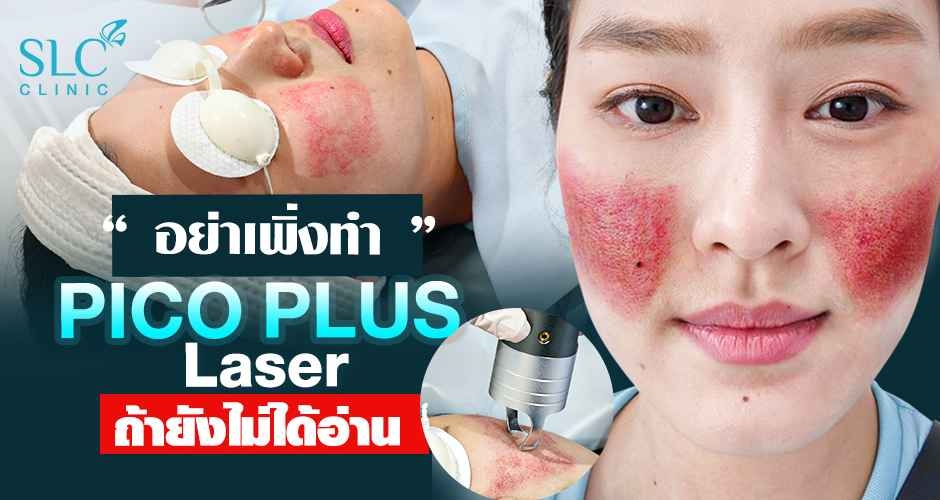Comparing 6 “Hair Removal Techniques”
|
Method
|
Tools
|
Results and Characteristics of New Hair
|
Period of New Hair Growth
|
Frequency
|
Long-Term Results
|
Side Effects
|
Shaving
|
Use a razor and pass over the skin that contains hair. This method removes all of the hair without affecting the hair follicles
|
New hair will become hard and dark after shaving because this method merely removes the hair shaft and not hair follicles. The new hair that have grown come from the same follicles.
|
2-3 days
|
- Need to be done at least once per week
- Need to be done consistently according to the hair growth cycle and because hair follicles are not destroyed.
|
Hair still continue to grow fast according to the hair growth cycle
|
- Some may experience skin itchiness and irritation
- Risk of inflammation on skin or hair follicles from the razor
|
Plucking
|
Use tweezers to remove hair from the hair follicles. There is a chance that the hair shaft may be only removed and not the follicles.
|
New hair will have the same characteristics. Hair with only the shafts removed and not the follicles will cause the new hair to become hard, making the skin prone to Keratosis Pilaris and acne.
|
1 - 2 weeks
|
- 2 times/month
- Need to be done consistently since hair follicles are not destroyed.
|
Hair still continue to grow according to the hair growth cycle
|
- Injury around the hair follicles
- Risk of inflammatory hair follicles (chicken skin)
- Risk of Keratosis Pilaris, since dirt or impurities may accumulate and clog the hair follicles. After plucking, the skin will produce new cells to cover the follicles, impeding new hair from penetrating through.
|
Hair Removal Cream
|
Apply the hair removal cream on skin and leave it on for a specified period of time. The cream contains corrosive substances that will weaken the hair. Wash or clean the applied area in the same direction as the hair line.
|
Hair become thick and hard, and may appear as dark spots around the applied area since only the hair shafts were removed and not the hair follicles.
|
2 - 3 days
|
- Must be done at least once per week
- Must be done consistently since only the hair shaft was removed, not the follicles.
|
Hair still continue to grow fast. The hair will not be as hard as when using the shaving method.
|
- Might result in a skin burn due to the use of chemicals
- Skin becomes dry and peels off, resulting in skin thinning
- Some of the creams have strong odors
- The skin around the applied area will become duller.
|
Epilator
|
The tip of hair remover will cause the hair shafts to stand up and pull them from the follicles, while removing the follicles at the same time. This method is faster than plucking.
|
New hair will have the same characteristics.
|
1 - 2 weeks
|
Must be done consistently.
Recommended to be done twice per month.
|
Hair will continue to grow according to the hair growth cycle. Continuous use of epilator will cause the hair to fall out easily due to the widening of hair follicles.
|
- Sharp pain similar to when the hair got plucked
- Risk of Keratosis Pilaris. Need to scrub the skin to clean and enable the follicles to exfoliate the remaining hairs.
- If perform continuously, the hair follicles will become wider.
- There will be some remaining hairs immediately after the application, which must be removed manually.
|
Waxing
|
Apply cold or hot wax onto the skin. Smooth a cloth strip on top of the wax and remove the strip within the specified time. This technique will remove both the hair and follicles. However, there is a chance that only the hair shafts are removed and not the follicles.
|
- New hair will become soft but with the same volume.
- Smooth and hairless skin in a short period of time.
|
1 – 2 weeks
|
Must be done once a month to ensure a smooth skin
|
Hair still continue to grow because this technique doesn’t destroy hair follicles.
|
- ได้รับความรู้สึกเจ็บขณะดึง WAX ออก
- ระยะแรกที่ขนกำลังจะขึ้นจะเกิดอาการคันผิว บางรายเกิดการอักเสบ มีผื่นแดง
- จะต้องงดการอาบน้ำอุ่นอย่างน้อย 3 วัน เพื่อถนอมผิวบริเวณที่ทำ
|
Laser
|
Gentle Yag Laser uses a laser beam to attract melanocytes in the follicles. This type of cell will absorb light energy and transform it to heat, thereby destroying the follicles to prevent hair growth, with no effect on the skin.
|
- Hair will gradually fall out after the laser.
- Hair will become thinner after each treatment. New hair will be soft.
- The amount of hair will significantly reduce after the first treatment.
- Hair will become lighter in color.
- Skin around the applied area will become brighter with smaller pores.
- Smooth skin with no Keratosis Pilaris.
|
4 weeks depending on the hair condition of each individual.
|
- Must be done consistently. Each treatment should be spaced out between 4-6 weeks.
- Should be done 5-8 times, depending on the location of the hair, to ensure that the hair are permanently removed, revealing a smooth skin.
- The number of treatment depends on the hair condition of each individual.
|
If done continuously, hair will become thinner and eventually disappear.
|
- During each treatment, the skin will feel warm. But this sensation will disappear within 15-20 minutes after the treatment.
- Keratosis Pilaris may occur only in the 1-2 treated area, resulting in a hard and thick hair.
|

.jpg)
